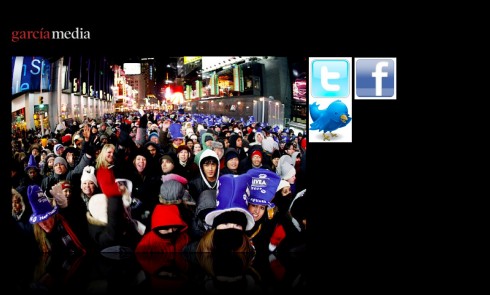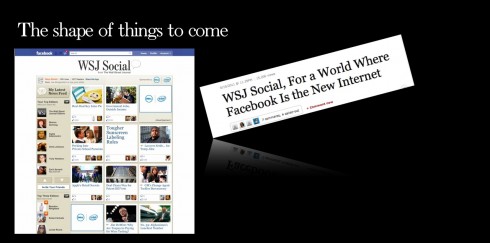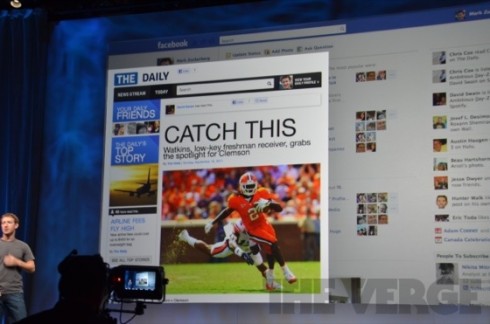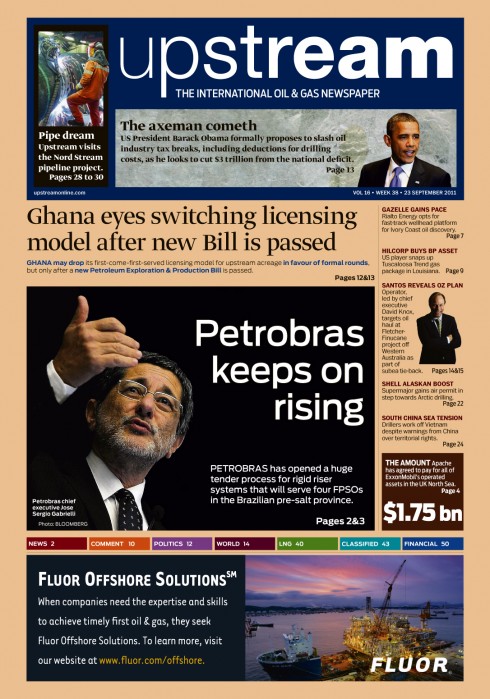This is the weekend blog post and will be updated as necessary. Next new blog post will be Monday, Sept. 26
Update #5; Luxembourg , Saturday, Sept. 24, 08:13
TAKEAWAY: It was a full day of discussion about breaking news in the age of Twitter and Facebook for the European Association of News Agencies (EANA) in Geneva, Switzerland: here is a recap and the challenges facing those in the news business when everyone’s a journalist
The new definition of news and the new “journalists”

Encouraging professional news people to come to that central square which is the social media outlets, where large numbers gather to share it all—-including getting updated?
It was a day in the midst of a group that I seldom meet during my conferences, seminars and workshops: editors who work full time in news agencies, those centers of operation where breaking news is the heart of the operation, and which thousands of newspapers worldwide benefit from.
In this case, I was a keynote speaker for the European Association of Newspaper Agencies, comprised of members from 37 European countries, each catering to specific clienteles but with one common goal:to make sure that the news gets to their client newspapers as comprehensively and swiftly as possible.
Swiftly is the key word here, and it was the theme of this year’s EANA conference, in Geneva, Switzerland. More importantly, the topic of the day was how to manage news in the era of social media.
I confess that when I was approached to be a speaker, I was not sure this would be an assignment I would take: a big topic, no easy solutions and changing by the minute. Indeed, it was a challenge, and, indeed, I worked on my presentation (with the able assistance of my copilot and Garcia Media’s art director/project managerReed Reibstein) until 14 minutes before the presentation.
I share with you what I learned, as well as highlights of the presentation to the group.
How the news travels today
We know that breaking news travels a much different route today than it did 10 years ago. Today, we have the media quartet: mobile telephone (for the alert), online (the report), print and tablet (for analysis, interpretation and story extensions).
I was happy to share with the group the definition of news from the 1917 newswriting textbook classic by M.Lyle Spencer, which read:
Any accurate fact that will interest
a large number of readers, and, of two stories, the accurate one that
interests the greater number of people is the better one…..
I added what I think is an accurate definition of news for 2011:
Anything you know now that you did not know 15 minutes ago….or
15 seconds ago
More important, we discussed the influence that Facebook and Twitter, along with other social media outlets, have in how news is distributed.
On repeated occasions recently (the landing of the US Airways jet in the Hudson River, the death of Michael Jackson, the attack on Osama Bin Laden’s compound), we have witnessed how the people themselves have been the first to alert the world about the event, using their mobile telephones as the journalistic tool, taking photos, making videos. The same phenomenon, especially with Twitter, has taken place during the so called Arab Spring uprisings in various countries. In this case, Twitter has not only been the medium through which the news filtered to the world, but also the method to inform those involved, urging them to continue the protests, and providing valuable information as to where groups were gathering, etc.
Speaker after speaker at the Thursday conference confirmed this.
John Einar Sandvand, editor of Media Norway Digital, told the group about the extremely vital role that Twitter played during the July massacre in Oslo and the nearby island of Utoya:
“It all began with Twitter, young people in the island were seeking help through their telephones, writing messages urging police to get to the island. From the time of the first explosion (at a government building in the city), wtihin seconds Tweets were telling the story; all news media started mobilizing reporters as well, but it was Twitter that got the process going.”
Alan Marshall, head of digital production, Press Association
, in the UK, also mentioned the role of Twitter during London’s summer riots:
Twitter played a key role during the London riots; did it contribute to the crisis?
But Marshall went one step further, to mention a key part of the role that social media play: uncovering trends, audience preferences:
“Following the Royal Wedding, we immediately realized by looking through the thousands of Tweets out there that the bride’s sister, Pippa (Middleton), was commanding a lot of attention, and so was her dress; thousands were Tweeting about Pippa’s presence and THAT dress. We immediately got on with that story as well. It was the Tweets that led us to that part of the story. This is a good thing when we can get a sense of what the people are talking about through the social media.”
Indeed, who can be against it. I, too, reminded the audience that smart editors everywhere are active participants in Facebook and Twitter, following the conversations, engaging in them, and deriving an arsenal of story ideas in the process.
What are the agencies to do?

The Wall Street Journal joins the central square that is Facebook, where the people gather to share life
What is traditional media to do when confronted with the irreversible facts that citizens are now armed with the tools to report news events as they happen, but, in addition, have a great willingness to do so, and get constant practice as they increase their participation in social media sites?
In addition, how do they approach the cruel math that tells them that the more of their time consumers spend on Facebook and other social networking hubs, the less they have left over for news sites.
Furthermore, according to a Nielsen study (The Social Media Report) , Americans spend 22.5 % of their time online visiting social networks and blogs, and only 2% learning about current events. In May 2011 alone, Facebook took 53 billion minutes of Americans’ time.
Several key suggestions were presented during the conference:
I urged the team to go to where the people are. Using a Times Square image with tons of people gathered, I urged the editors not to remain in the sidelines, but to come to the central square, where the people are (as in Facebook, Twitter, etc.) This was a point that several of my fellow speakers also mentioned.
And, in fact, and very serendipitous as I prepared this presentation, The Wall Street Journal unveiled plans for what it calls WSJ Social
which filters Journal content through the so-called social graph to yield a news product that lives entirely within the walls of Facebook, making WSJ content available where the people are and de-emphasizing the website as the main news hub.
If you can’t beat them, join them.
And we will see others doing the same thing, as Facebook has invited a dozen or so news outlets (including CNN, the Washington Post and the Huffington Post) to produce so-called Facebook editions.
We will probably see a procession of, first, big brand news media companies coming to the central square of Facebook (and others), but eventually many smaller newspapers and magazines find their spot there as well. It makes sense. Business models will have to be worked out so that news content is paid for, while advertising revenue may be shared.
In concluding remarks, the members of the news agencies were reminded that it is important to join social media, but also extremely desirable to build campaigns to remind the audience that the preparation of news is best in the hands of professionals who are trained to do it. Nobody can unring the bell of social media and its impact on breaking news, and the first headline may come out of a bystander’s Twitter account now and in the future , but news agencies must cultivate social media as an ally, expand on stories (like only professionals can), and use the social media to keep an eye on trends, on events, and, of course, to track how politicians and celebrities use the social media nowadays to break important news to their followers.
Rather than lament, we urged the editors of these news agencies to celebrate news, to develop apps where they, too, interact with the people in the “central square” and to aim for the highest professional standards.
As always, I reminded them that this is the best time for storytelling and that there is more to the story than the first headline.
Going beyond the Twitter headline and how we handle how a story develops represents one of the greatest challenges for the media in 2011.
At this conference, everyone seemed to be ready for the challenge.
Of related interest

The Daily coming to Facebook
Facebook, social news apps partners media
http://thisismynext.com/2011/09/22/facebook-social-news-apps-partners-media/
A First Look at Social Reader, WaPo’s New Facebook App
http://www.wired.com/epicenter/2011/09/facebook-social-reader-wapo/.
First paragraph: Facebook and the Washington Post Company introduced a new social news reading application at Facebook’s f8 developer conference on Thursday, aiming to change the way users interact with online news content. Wired.com had a chance to use the app before its wide release.
Dubbed Washington Post Social Reader, the app allows users to read and share news articles from partner media outlets within the Facebook ecosystem itself.
Facebook to make big shift to passive content sharing
http://www.poynter.org/latest-news/media-lab/social-media/146874/facebook-to-make-big-shift-to-passive-content-sharing/
Also of interest:
In-App purchases on the rise
http://pinchzoom.com/posts/in-app-purchases-on-the-rise/?utm_source=twitterfeed&utm_medium=twitter
Highlight: Just 4% of all iPhone applications feature in-app purchases but, among the 200 highest-grossing applications in the iTunes App Store, 72% of the application revenue came from those with in-app purchases. It (Distimo) says a lot for the “freemium” model, where developers give away the app for free, but then offer additional features with an in-app purchase.
Upstream: coming along nicely

Front page of this week’s edition of Upstream, the weekly of the oil and energy industry
Part of this past week I have spent working closely with the editor of Upstream, the weekly of the oil and gas industry, in Oslo. It was a visit to review our redesign of Upstream three months later, and my meetings with editor Erik Means, and acting design director, Robert Macli, went well: evaluations, critiques, and here is the front page for this week’s issue.
Upstream is distributed globally to an audience of people in the oil and energy business, with newsrooms in Oslo and London. We now prepare to work with the team on their online and tablet editions in the months to come.
More about our redesign of Upstream (case study):
Upstream: a rethinking for the newspaper of the oil and energy industry
https://garciamedia.com/blog/articles/upstream_a_rethinking_for_the_newspaper_of_the_oil_and_energy_industry